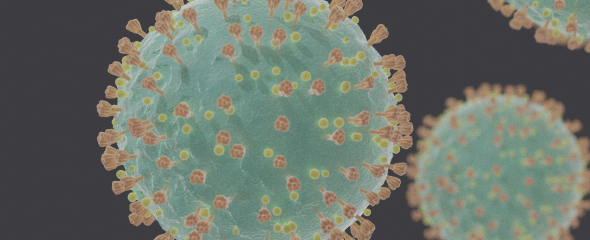At present, there are increasing demands to relax the restrictions on social life that have been imposed since mid-March. So far, it has remained relatively unclear how effective the restrictions are. Scientists led by the physicist Prof Michael Meyer-Hermann, head of the Department “Systems Immunology” at the Helmholtz Centre for Infection Research (HZI) in Braunschweig, are now describing a method to measure the effects quantitatively and thus provide decision-makers in politics with a basis for assessing the situation.
A decisive variable in the description of the spread of an infectious pathogen is the reproduction number. The basic reproduction number indicates how many people an infected person infects on average. It is an important indicator of how quickly an epidemic spreads. Meyer-Hermann and his colleagues now calculated a time-dependent reproduction number of SARS-CoV-2 for different, overlapping time windows of the epidemic course to date. To do this, they extended a classical model from mathematical epidemiology with SARS-CoV-2-specific components in order to describe the spread of the pathogen more precisely. Their results show that the time-dependent reproduction rate of the virus has decreased significantly in all German states since the introduction of the restrictions.
At the time of publication, the values for all German states converge towards a value of 1. "However, our data also indicate that this is not a plateau," says Meyer-Hermann. "The value has continued to fall in the last three days since the manuscript has been completed, and this trend seems to be continuing." This means that under the current conditions of social life, the spread may slow down further.
"Immunisation of the entire population cannot be achieved while adhering to the capacities of the healthcare system"
Meyer-Hermann and his colleagues have also integrated data on the number of hospitalised and intensive care patients into their model so that they can predict the burden on the German healthcare system in different spread scenarios. With a reproduction number of 1, as is currently achieved in most German states, there would be ten thousand intensive care beds permanently occupied with COVID-19 patients for a whole year. According to Meyer-Hermann, the healthcare system can just cope with this situation, but at this rate, only about one percent of the population would have been infected with SARS-CoV-2 after one year. "Immunisation of the entire population cannot be achieved while adhering to the capacities of the healthcare system," emphasises Meyer-Hermann. If the time-dependent reproduction number of the virus returned to its level of a week or ten days ago, the number of intensive care patients would be in the hundreds of thousands within a few months and the healthcare system would be completely overstrained.
If, on the other hand, it was possible to reduce the reproduction rate to values well below 1, the spread of the virus would be stopped within one to two months according to the calculations of the infection researchers in Braunschweig. From their point of view, it should therefore be considered whether the restrictions in social life should even be increased in the short term in order to further slow down the spread. "The further we can reduce the reproductive number, the faster the emergency situation will be over, which may even argue for stricter measures," says Meyer-Hermann. It is also not at all clear whether relaxing the measures would not be worse from an economic point of view, because this would prolong the fight against the virus. "We needed the officially imposed restrictions to draw people's attention to the danger posed by the epidemic. Relaxing them now is the wrong signal at this time," says Meyer-Hermann.
The HZI department "Systems Immunology" of Michael Meyer-Hermann is located at the Braunschweig Integrated Centre for Systems Biology (BRICS), a joint facility of the Helmholtz Centre for Infection Research and the Technische Universität Braunschweig.
Original publication
Khailaie Sahamoddin, Mitra Tanmay, Bandyopadhyay Arnab, Schips Marta, Mascheroni Pietro, Vanella Patrizio, Lange Berit, Binder Sebastian, Meyer-Hermann Michael: Estimate of the development of the epidemic reproduction number Rt from Coronavirus SARS-CoV-2 case data and implications for political measures based on prognostics. medRxiv preprint doi: https://doi.org/10.1101/2020.04.04.20053637.
This article is a preprint and has not been certified by peer review. It reports new medical research that has yet to be evaluated and so should not be used to guide clinical practice.
Daily updated values for the SARS-CoV-2 reproduction number can be found under the link: http://secir.theoretical-biology.de
Author: Dr. Ulrike Schneeweiß

